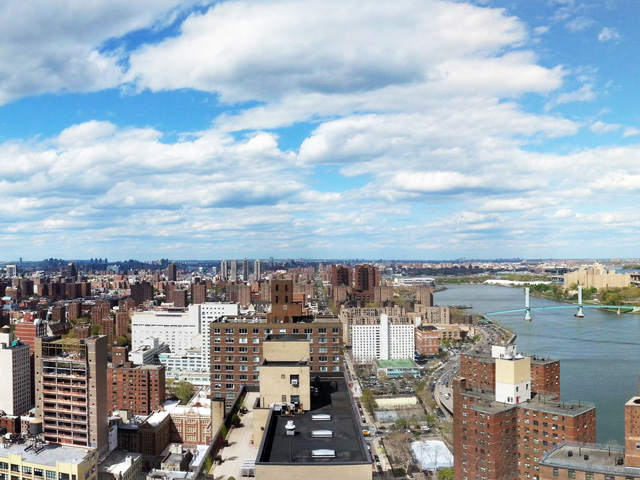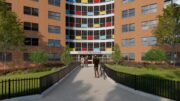It may be six years or more before shovels hit the ground, but the MTA will move ahead with plans for the next phase of the Second Avenue subway, the authority’s chairman said at a State Assembly hearing last week. MTA officials hinted that it might look to tap tax revenue and fees from new development in the area to fund the project, as the city did at Hudson Yards.
The new line will push north through East Harlem to 125th Street, likely bringing up real estate values in the process. MTA Chairman Tom Prendergast noted how the first phase of the project had already increased property values on surrounding blocks, saying, “One could make an argument that for that real estate uptick, someone should be paying for that benefit.”
That “someone” would be New York City, which could divert new property tax revenue to pay for the project. Developers could pay some too, by purchasing additional air rights to build bigger projects. This is how funding was lined up for the 7 line extension to Hudson Yards, the city’s only experiment with “value capture” for transit
It sounds great in theory, but value capture is unlikely to work in East Harlem.
First, the Bloomberg administration’s plan for Hudson Yards relied heavily on new commercial development. They planned for 28 million square feet of new offices by 2035, and the additional property taxes would provide nearly half of the revenue raised through value capture.
In East Harlem, some commercial development may follow the Second Avenue subway, but it will be nowhere near the same scale. Billions in tax revenue would have to come from other sources – namely, residential development.
Overall, there isn’t nearly as much potential for new development in East Harlem as Hudson Yards – outside of a few scattered parking lots and underdeveloped sites, the neighborhood is generally built up to the maximum density allowed by today’s zoning.
An aggressive upzoning, with densities similar to the Upper East Side (where floor-area ratios of 10, or 12 with inclusionary housing bonuses, are allowed on the avenues), would lead to more residential development. But would it be enough to cover even a portion of the Second Avenue subway?
Based on our analysis of property bills for recently-developed buildings in East Harlem (whose full bills would be around $8 per square foot per year), to raise $2 billion in property tax revenue over 30 years – before accounting for money diverted to affordable housing abatements – there would have to be about eight million square feet of new residential development in East Harlem.
But redirecting property taxes to transit is hampered by the fact that those revenues are often already dedicated to affordable housing production. With the city giving out property tax breaks to buildings that include affordable units – not something that Bill de Blasio would likely forego in East Harlem, where local politicians and community activists are heavily focused on affordable housing – there would be a 12-year gap between when a building is finished and when it begins paying additional property taxes. In other words, unless affordable housing is left out, or simply mandated without abatements – neither of which is practical – it would be more than a decade before new development could start paying towards construction of a subway.
In the meantime, debt service on the project would have to be paid. At Hudson Yards, bond payments were due just two years after borrowing began, with initial payments around $100 million a year. Revenue for the first decade of payments would have to come from elsewhere.
Some money could come from selling additional air rights, but these fees would not be enough to raise adequate revenue for the subway project. At Hudson Yards, the city raised just $88 million by selling development rights over six years, or $14 million a year—and even there, that was not enough to cover debt service payments.
Most likely, value capture would mean that the city would pay for borrowing out of the general fund, at least for the first decade or so, as at Hudson Yards. There, when revenues fell short of rosy predictions, the city ended up kicking in hundreds of millions, with even more obligations in the future, to cover the shortfall.
The city paying for transit out of its general revenues is not necessarily a bad thing. But value capture has proven to be more expensive than if the city had simply borrowed funds on its own and paid the loans back using money from the general treasury – $1.3 billion more at Hudson Yards, according to the city’s Independent Budget Office.
Finally, there’s the issue of cost. New York pays much more than what its peers – cities like London, Tokyo, Hong Kong, and Paris – shell out for a mile of new subway tunnel, making funding such projects out of real estate development all the more difficult. While the MTA has avoided the issue of its exceptionally high construction costs, and local politicians haven’t forced the issue, bringing these down to earth may be one way to close the funding gap for new projects, and would likely save more than value capture would add.
Value capture may yet be a tool to fund transit in New York, but its best application is in areas that are largely underdeveloped, where new buildings could rise on a massive scale. It may be used in places like East Harlem, but the resulting revenue would only account for a small part of the Second Avenue subway’s total cost.
Talk about this topic on the YIMBY Forums
For any questions, comments, or feedback, email newyorkyimby@gmail.com
Subscribe to YIMBY’s daily e-mail
Follow YIMBYgram for real-time photo updates
Like YIMBY on Facebook
Follow YIMBY’s Twitter for the latest in YIMBYnews






